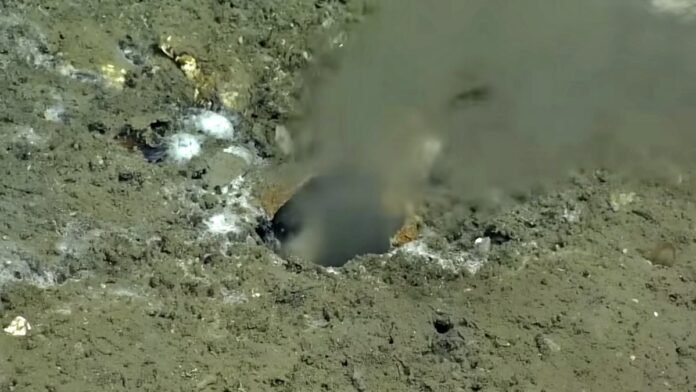
Washington: Leaks in an area known as Fault Lines in the Pacific Ocean have indicated major earthquakes. Scientists have found a peculiar leak in the floor of the Pacific Ocean that One day can cause a massive earthquake. According to experts, this leak seen from the Pacific coasts of the United States (USA) and Canada (Canada) was never seen before.
A study led by the University of Washington discovered seeps of warm, chemically distinct liquid shooting up from the seafloor about 50 miles off Newport, Oregon. The paper, published in Science Advances, describes the unique underwater spring the researchers named Pythia’s Oasis. Observations suggest the spring is sourced from water 2.5 miles beneath the seafloor at the plate boundary, regulating stress on the offshore fault.
The team made the discovery during a weather-related delay for a cruise aboard the RV Thomas G. Thompson. The ship’s sonar showed unexpected plumes of bubbles about three-quarters of a mile beneath the ocean’s surface. Further exploration using an underwater robot revealed the bubbles were just a minor component of warm, chemically distinct fluid gushing from the seafloor sediment.
“They explored in that direction and what they saw was not just methane bubbles, but water coming out of the seafloor like a firehose. That’s something that I’ve never seen, and to my knowledge has not been observed before,” said co-author Evan Solomon, a UW associate professor of oceanography who studies seafloor geology.
The feature was discovered by first author Brendan Philip, who did the work as a UW graduate student and now works as a White House policy advisor.
This rift is known as the Pythia Oasis, which is located in the Cascadia Subduction Zone (CSZ). The CSZ is where two plates collide, but it is possible that this fluid is controlling the pressure between the continental and oceanic plates. The water coming out of this strange leak is on a fault line where the temperature is between 300 and 500 degrees Fahrenheit. That’s why the water spilling out of the ocean floor about 50 miles from Newport, Oregon is warm.

In any case, if additional water continues to flow out, the report says, it could increase the pressure on the fault and also the stress on the two plates. Then, if the tension builds up and the plates begin to move, an earthquake can occur. Scientists saw bubbles of methane rising a mile below the sea. Evan Solomon, an oceanographer at the University of Washington and co-author of an article describing the phenomenon published in the journal Scientific Advances, explained that if fluid pressure is high, it means that friction is low and the two plates can slip. If the pressure is less, the two plates will lock. He further said that the fluid coming out of the fault line is like leaking lubricant. This is bad news for earthquake hazards. Reports say that this leak could be a sign of a massive earthquake off the coast of North America.


















































